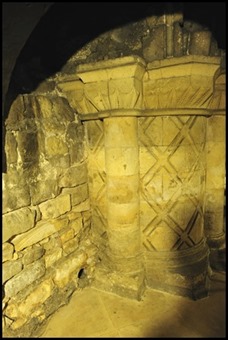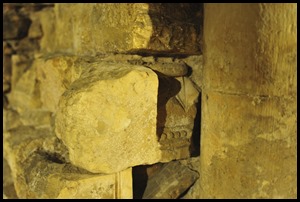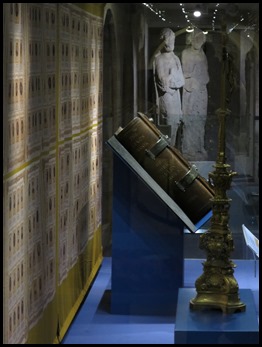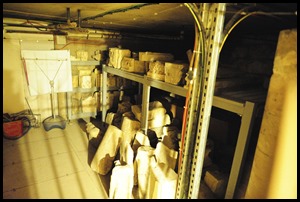West Crypt

|
The West
Crypt
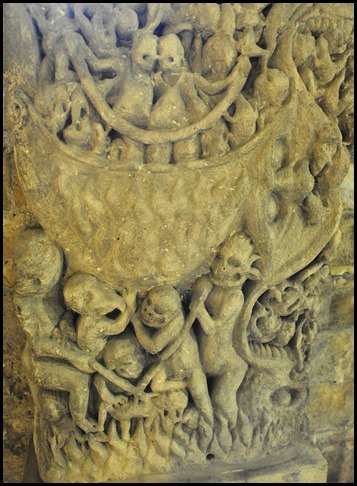 We went down the steps into the West
Crypt and the first thing we saw was The Doomstone.
This is a survival from the first Norman Minster. It shows ‘Hell’s cauldron’ or
‘the mouth of Hell’. It is a gruesome scene of lost souls being slowly pushed
into a boiling cauldron by devils and demons. More grinning demons stoke the
fire under the cauldron. At the top of the stone
to the left, you can see a man carrying two bags of money showing the sin of
greed. To the man’s right is a scantily clad woman depicting the sin of lust.
The stone is also decorated with toads. Toads
were thought to be creatures of magic. They were associated with evil and
darkness. The stone must have always been
free-standing as the imagery continues around its edges. It must have also have
been inside the Minster throughout its existence as it is very well preserved.
Utterly unique.
 We then had a look around this big, interesting crypt.
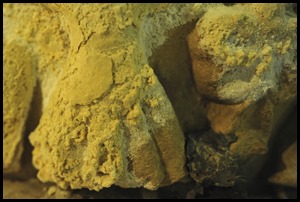 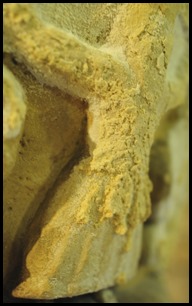 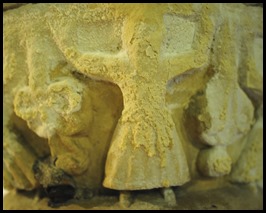 Up close on some of the columns down
here we could see the limestone
crumbling.
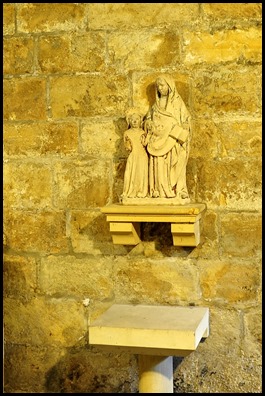 St Anne teaching
the Virgin to read. This mid 15th century carving shows the Virgin Mary
being taught to read by her mother. It is carved from Derbyshire stone and
retains some of its original paint. It was given by the Friends of York Minster
in 1953.
 Layers of
History. Below us we could see remains from the Roman fortress. The
column base is from a colonnade in the house of a commanding officer and dates
to the 4th century. The algae covered green wall is part of the curved
foundations of the most eastern part of the 1080 cathedral. The red studs on the
floor mark the inner and outer edges of this wall. We can therefore see how much
longer the present cathedral is in comparison to the Norman cathedral, as well
as how thick the Norman walls were.
 The Font.
This font consists of two parts. The bottom half dates to the mid 15th century,
and came from Bedern Chapel. The cover was designed by Sir Ninian Comper in
1947, and commemorates the baptism of King Edwin by Bishop Paulinus in 627 in
the first Saxon cathedral. The figures from left to right are: Queen Ethelburga,
King Edwin, Saint Paulinus, Saint Hilda – Abbess of Whitby and James the Deacon.
Baptisms in York Minster are usually carried out in this font.
 Stone Trough or
Lavatorium. It is possible that the crypt was used as a medieval treasury
and this trough was used to rinse the ceremonial vessels. Decorating the
entrance to the drain shaft is a carving of a man with a small
animal.
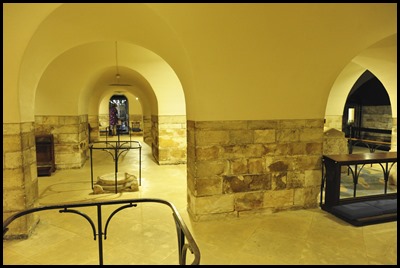 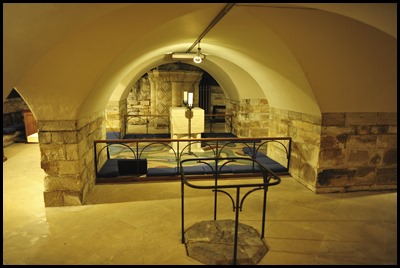 We went through an archway and found
ourselves in a brightly lit area.
 St William was Archbishop of York in the mid 12th century, he was canonised in 1227. His tomb was in a sorry state of repair and the decision was taken to replace it during the 1967-72 excavations in the Minster. On opening the tomb it was found to contain not only the remains of St William but those of a baby. The identity of the baby is unknown, suggestions include a stonemason's unbaptised child, or Prince William of Hatfield, baby son of Edward III, whose empty royal tomb is also in the Minster. St William's body has moved many times over the centuries, now he rests here in the west crypt surrounded by candles, this site specially chosen as the crypts are mostly unchanged since he was alive. His new tomb is a recycled Roman sarcophagus with a modern lid, resting on a Roman mosaic floor.
We turned and behind us on the wall was a lovely mosaic of St William, totally unexpected.
Wandering around down here was full of surprises. Odd columns and bits of old stone poked in as packing.
We bimbled around and found nooks and crannies. Sadly the Treasury was closed, from where we stood we could see The Kings Book of York Fallen Heroes.
ALL IN ALL QUITE SOMETHING |

